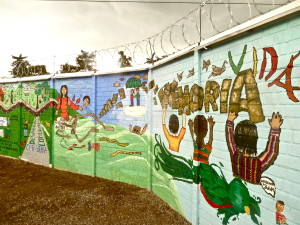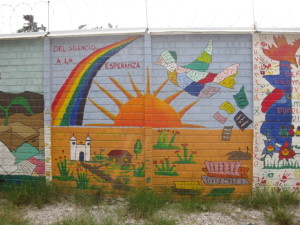Guatemalan National Police Archive Project
The Historic Archive of the Guatemalan National Police (hereafter the Archive) was discovered, quite by accident, in July 2005. Researchers immediately recognized both the importance and the fragility of the Archive’s contents. As a result, in early 2006 the Archive team invited Patrick to evaluate the documents and help them answer a seemingly simple question: How can we learn about the contents of the Archive in a shorter period of time than is needed to systematically examine each individual document?
After inspecting the Archive, Patrick designed a multi-stage random sample of documents. In May 2006, Tamy Guberek, Daniel Guzmán, and Romesh Silva arrived in Guatemala City to create the sample design, data model and coding frame for the study. Members of the American Statistical Association began to advise HRDAG (then a part of the Benetech Human Rights Program) on the sample design of the project. The HRDAG team also trained a team of coders who would select the sample documents and look for specific information relevant to the quantitative research questions. These coders would then secure the sampled data with Benetech’s Martus information management tool.
The initial samples were designed to be relatively small, such that they could be collected in a matter of weeks or months. Between 2006 and 2009 nine samples were selected, coded, and entered into Martus. These nine samples, consisting of approximately 8,000 documents, provided the basis for preliminary analyses, presented at the annual Joint Statistical Meeting in 2009. Papers describing the sampling process, weight calculations, and initial estimates can be found on our publications page.
 Over the next two years two additional, much larger, samples were collected, resulting in eleven total samples consisting of approximately 18,000 documents.
Over the next two years two additional, much larger, samples were collected, resulting in eleven total samples consisting of approximately 18,000 documents.
Together with our partners at the Archive we are in the process of drafting a comprehensive report that describes the entire project up to this point – including sampling, coding, data analysis, and results. Once completed, we look forward to sharing the report here (in English) and on the Archive’s site (in Spanish).
It is important to note the differences between the results presented in previous reports and the forthcoming publication. All are based on representative samples of Archive documents. However, the preliminary analyses were based on fewer than half the total number of sampled documents analyzed in the forthcoming report. Additionally, at each stage of the analysis we refined our research questions and deepened our knowledge of the Archive. This does not imply that the results published in earlier reports were incorrect. The differences between more preliminary estimates and the more recent ones in our forthcoming report reflect the increasing size of our sample and the evolution of our understanding of the Archive’s contents.
Lastly, to see examples of documents contained in the Archive, visit the University of Texas’s excellent digital archive, which currently contains over 10 million scanned images of documents. And here are blogposts from Carolina López about quantitative research at AHPN and Oficio COC 207/laov.
Return to Guatemala Project page
Photos of murals near the Archive: Megan Price 2013.

